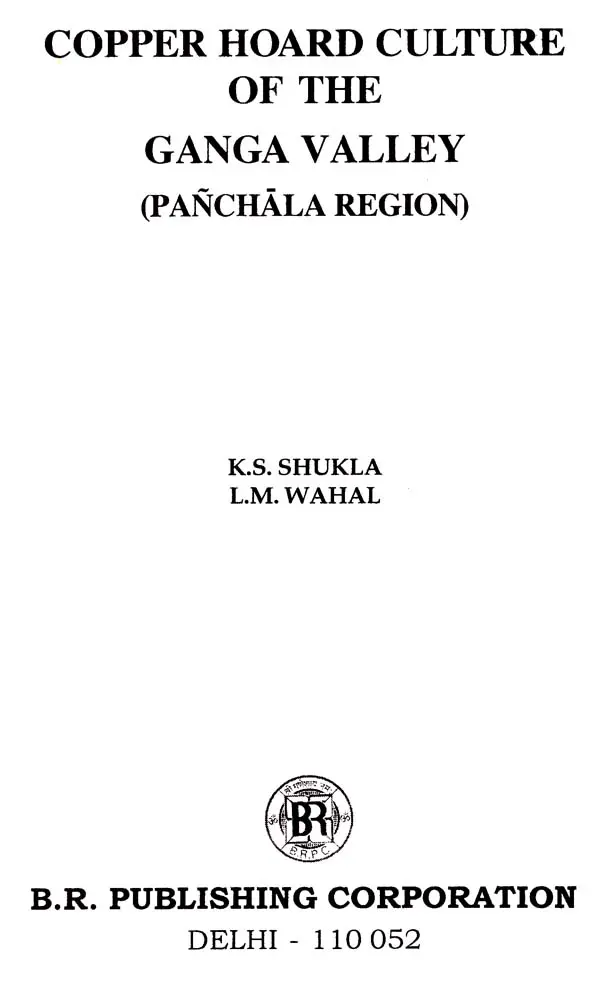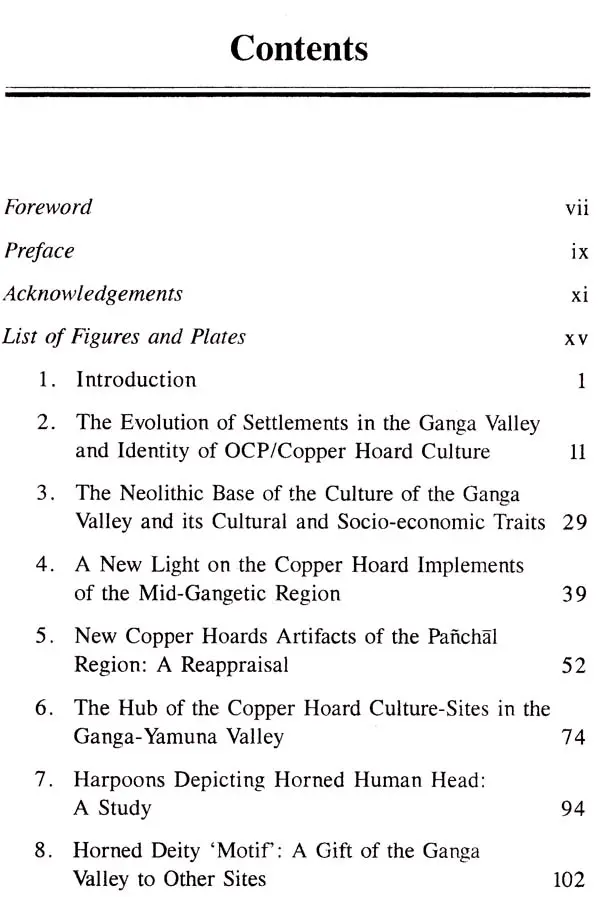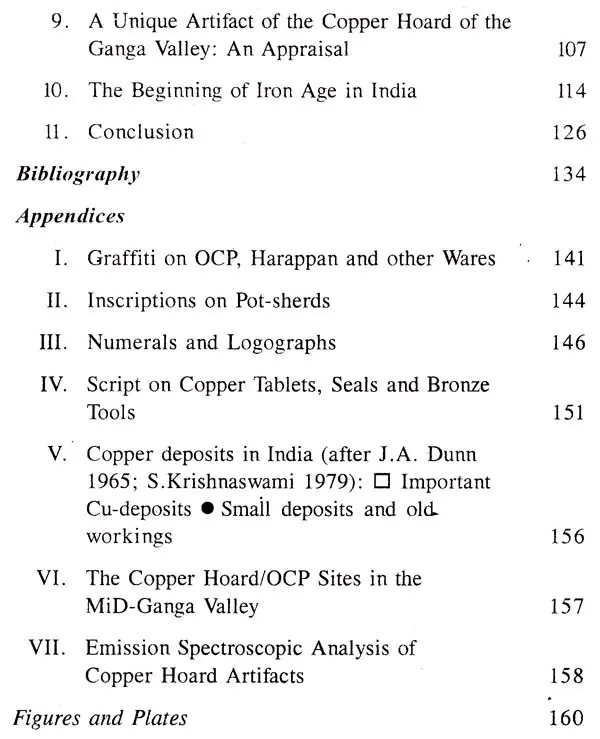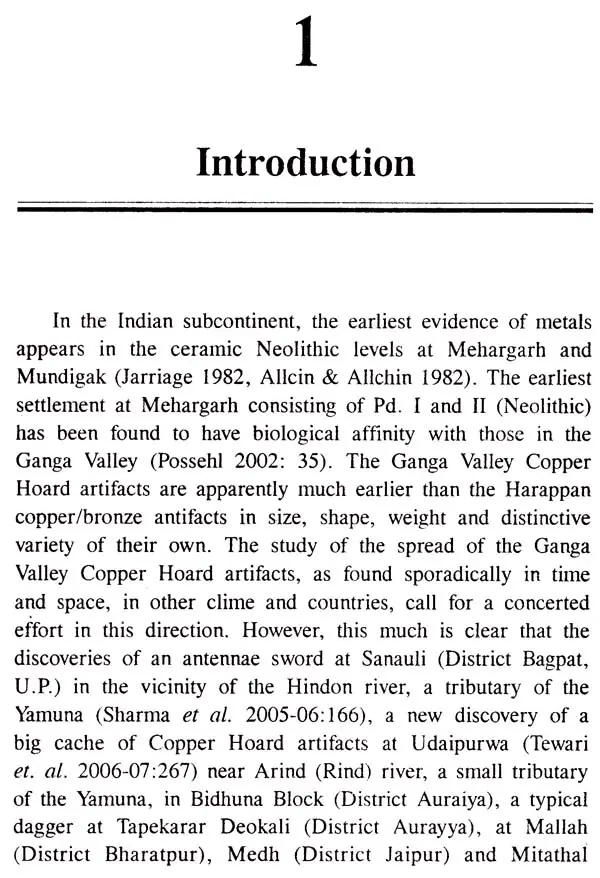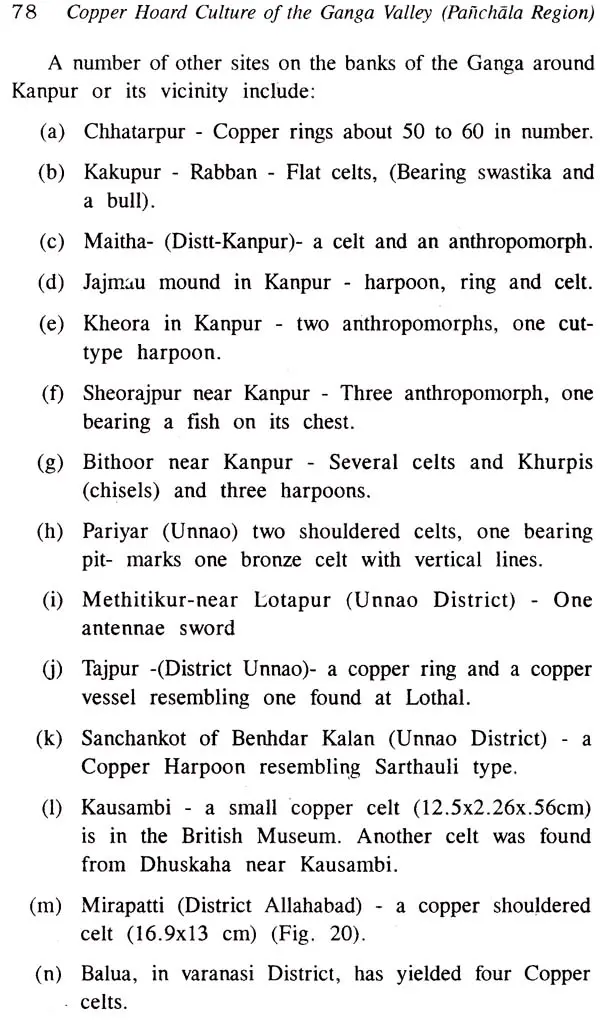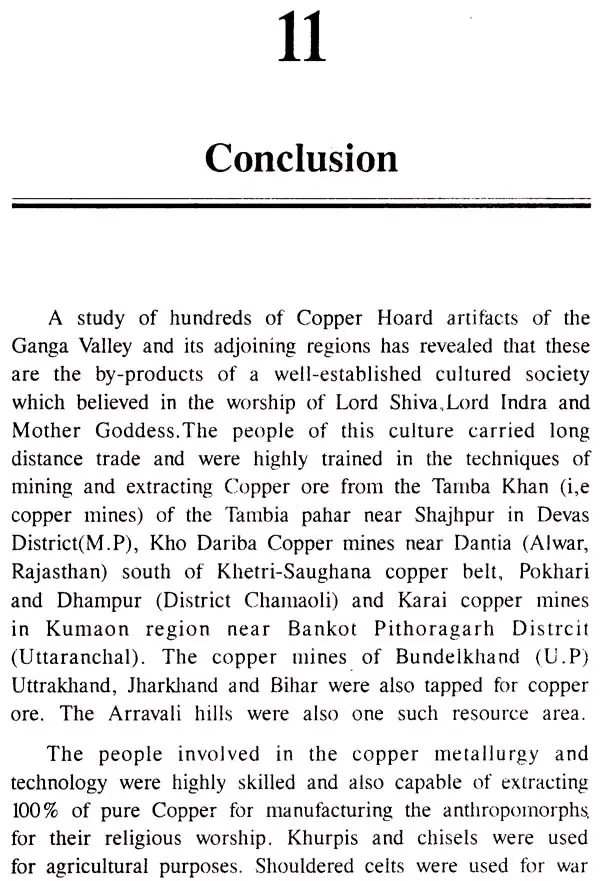
Copper Hoard Culture of the Ganga Valley (Panchala Region)
Book Specification
| Item Code: | UAK946 |
| Author: | K.S. Shukla |
| Publisher: | B.R. Publishing Corporation |
| Language: | English |
| Edition: | 2011 |
| ISBN: | 8176467383 |
| Pages: | 232 |
| Cover: | HARDCOVER |
| Other Details | 9.00 X 6.00 inch |
| Weight | 430 gm |
Book Description
The copper-hoards of Ganga valley are one of the most important archaeological finds of ancient India. An in-depth study of these artifacts was a great desideratum. The cultural horizon of the Gangetic copper-hoards is generally related to the OCP culture, which seems to be contemporaneous with the Neolithic culture of the northern India and Chalcolithic 'Sothi' culture of Rajasthan and Padari culture of western India.
The new discovery of copper anthromorphic figures at Madarpur (Moradabad) and Horned Human Faced harpoons at Dhanni-Nevädä-Ojhan (Känpur Dehät), Fatehpur, Jirikpur (near Bangarmü, district Unnão) and Sandhay (Haryana) have added a new chapter to the study of the cultural and technological aspects of the copper-hoards of the Ganga valley and its adjoining regions.
Both Dr. K.S. Shukla and Shri L.M. Wahal are trained and experienced archaeologists, and they have specially dwelt upon the various aspects of the copper-hoards of the Panchal region of the Ganga-Sai basin. It is worthwhile to mention the decorative and auspicious motifs, animal figures and pit-marks on these copper artifacts as well as certain new tool types including weed chisels (Khurpies). lugged Celts and particularly the horned daggers mentioned as 'Tigma' in the Vedic literature. Again, it is noteworthy that no inscription has, so far, been found on any artifact of the copper-hoards except a few strokes on a single bronze celt discovered at Pariyar, District Unnão. Moreover, no copper anthromorph has ever been found in a grave. This shows some kind of religious sanctity attached to the copper anthromorphs which are said to be made of ninety nine percent pure copper and identified by Dr. Shukla as Siva in Gangadhar posture and Natesh form.
The Copper Hoard Culture of the Ganga Valley belonged to Neolithic/Chalcolithic period when farming was in its full swing and metal technology had reached to its acme of perfection, for smelting copper with 99% purity to produce unique anthropomorphic figures and human faced' harpoons was not a layman's job. These artifacts truly represented the Ganga Valley Civilization which found its full efflorescence in the so-called Harappan Civilization imbibing all the noble traits of the ancient Vedic Culture universally known as the Rig Vedic Culture of India.
The 63-year old Pakistan thrives, today, on the 5000 year old ancient civilization of India and is in proud possession of her two unique archaeological sites viz. Harappa and Mohenjodaro. These two sites have yielded copper artifacts and utensils, that tell of the story of the affluent stage of the Vedic Aryans, and are in fact, the repositories and representatives of the culture of the autocthonous inhabitants of the Ganga Valley settled there. The epi-centre of this culture is Ganga-Sai doab. The discovery of bronze artifacts, such as a celt with graffiti marks and a tanged chisel at Pariyar (District Unnao), a carinated copper vessel and a ring at Tajpur (District Unnao), a copper harpoon with flattened barbs, a stone figure and a small unbaked terracotta statuete of the Harappan affinity at Sanchankot, a chert blade at Saipai, suggests the transformation of the Ganga Valley Copper Hoard Culture into the succeeding so-called Harappan culture which has yielded profuse inscribed material, seals, and sealings, copper tablets and terracottas. The graffiti marks, numeral signs and animal figures carved on the Harappan pots and pans, seals and sealings have their origin in the Ganga Valley Copper Hoards and the terracotta tablets and seals found there. The decipherment of the Indus Saraswati seals and sealings has revealed to the first author that the Mature Harappan period represented the Mahabharata Era when Lord Krishna had challenged the supremacy of Lord Indra and Kansa, and ushered a democratic era in the history of India. It may be termed as 'Kansa-Krishna Era."
Book's Contents and Sample Pages
